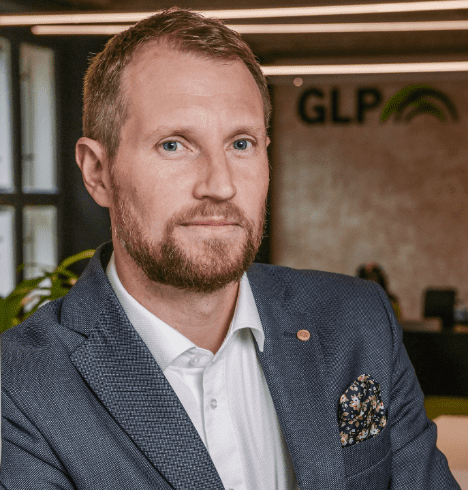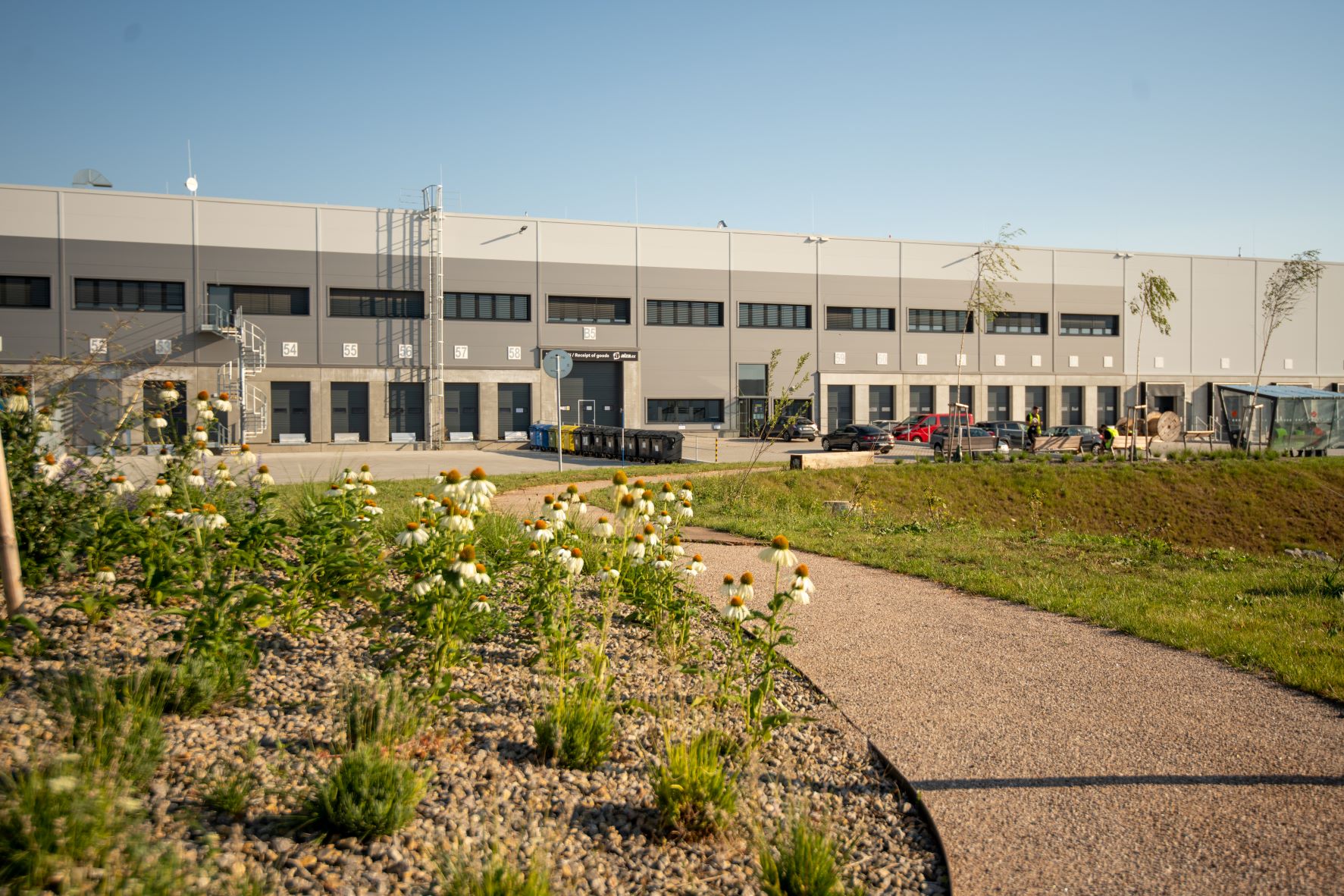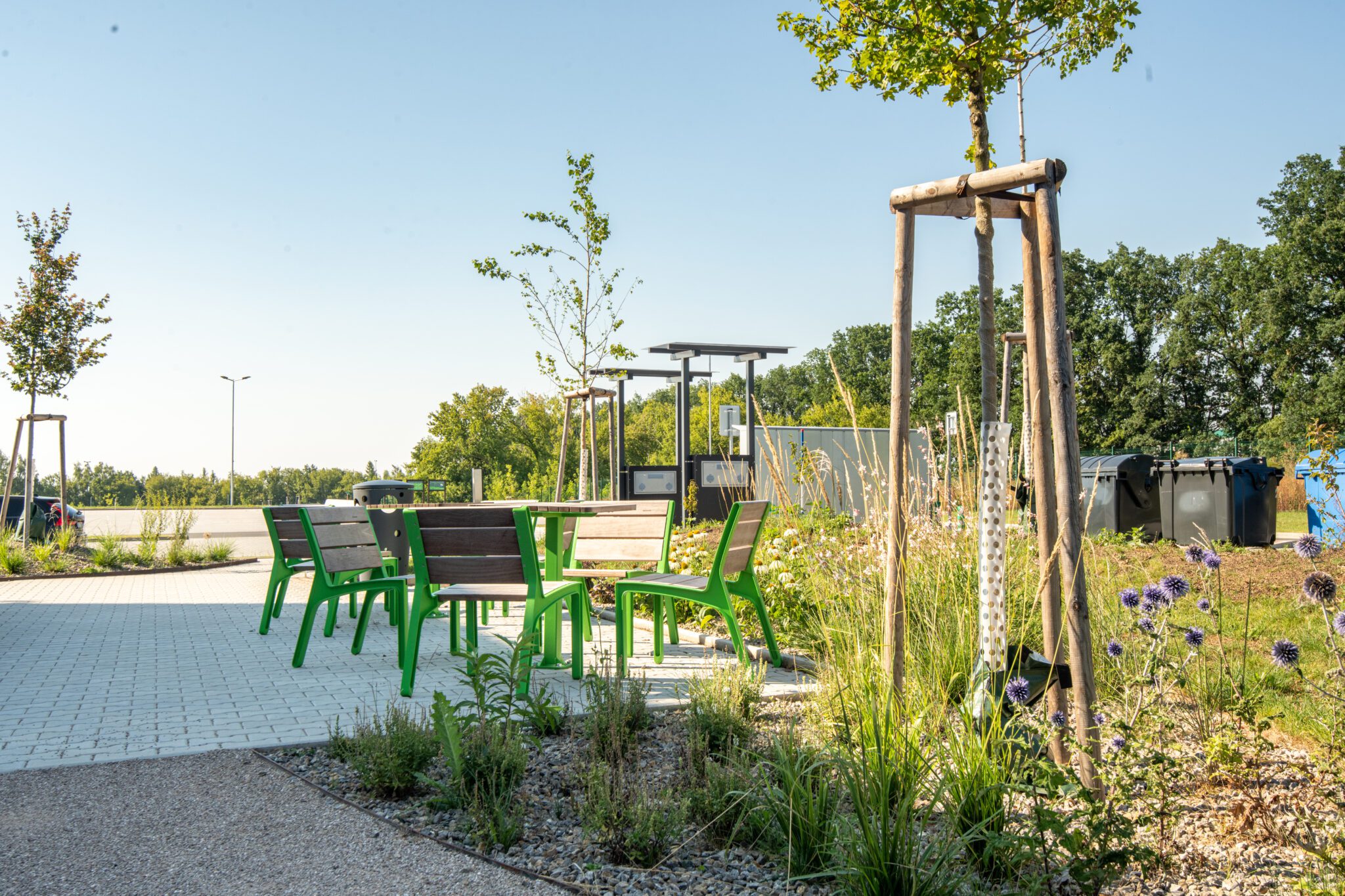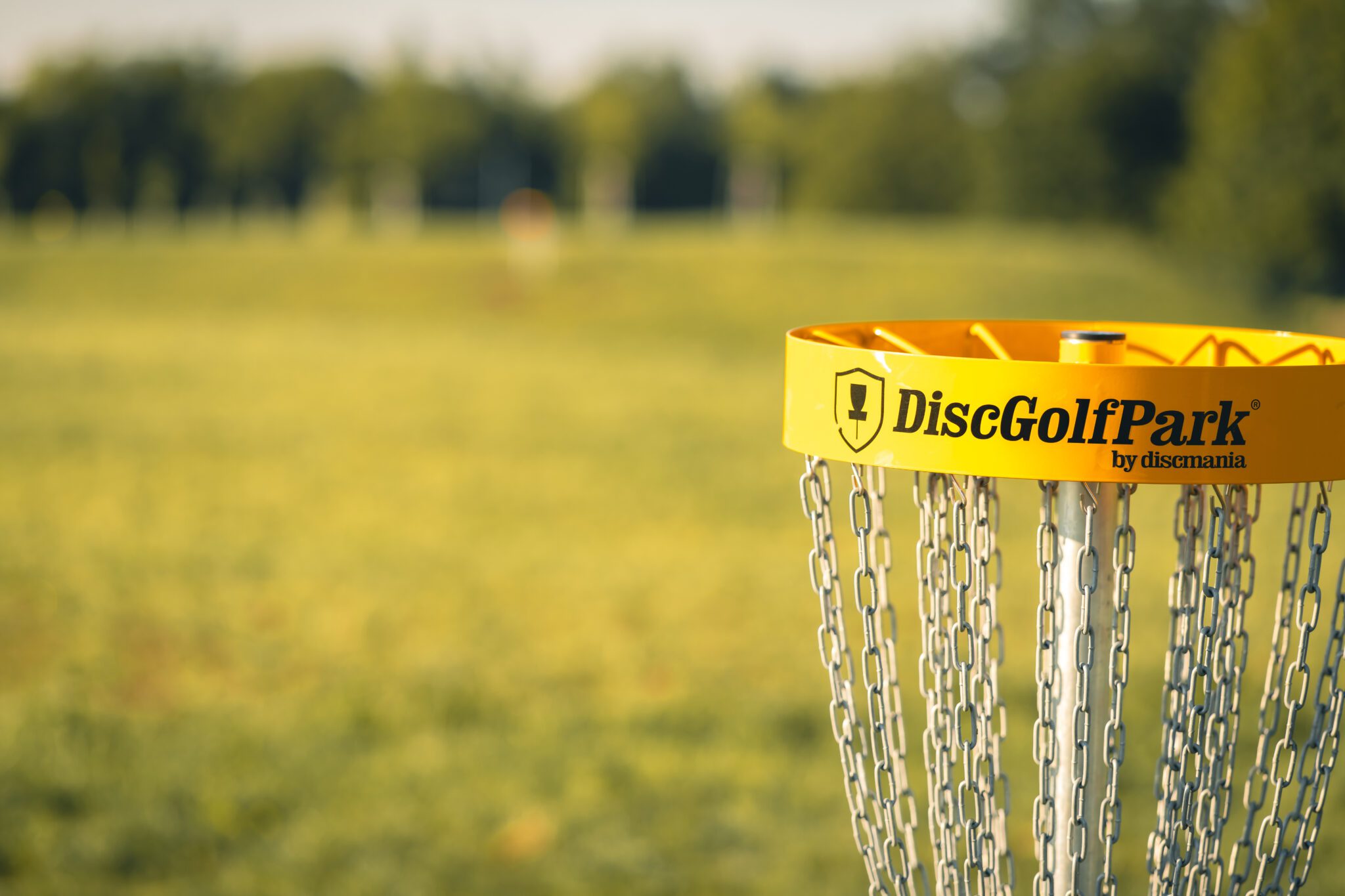Arriving at GLP Park Brno Holubice is a completely different experience from visiting similar industrial-logistics developments. It feels more akin to entering a park complex surrounded by gardens with a community orchard. The buildings on the site, the loading bays and the wide driveways make it clear where you are. The low height and sensitive integration into the ground do not interfere with the surrounding landscape.
We are welcomed to the Holubice site by Aleš Růžička, GLP’s technical director, who is checking on the progress of the installation of heat pumps in the newly built halls. According to him, the emphasis on environmental protection, reduction of ecological impact and maximum use of renewable energy sources does not lie in contradiction or hinder the development of even large parks such as those in Chrášt’any or Holubice.

What do you do to ensure that your developments have the least possible impact on the surrounding area? So much greenery, including an orchard, is not common in industrial zones.
We are aware that our activities will undoubtedly have some environmental impact on the surrounding areas. That’s why we strive to create more benefits and offset the negatives. Our aim is to raise and elevate the level of the location we build upon, i.e. to give more than we take. We remove old ecological burdens, build parks, bio-corridors, plant herb meadows, build playgrounds, wind farms, remove landfills, increase the capacity of municipal water supplies, expand sewage treatment plants, rebuild roads, restore old dirt roads and of course plant trees.
We know that many companies plant trees to offset the various impacts of construction. What does GLP do to go beyond normal landscaping?
For us, planting trees is just the beginning. That’s why the Holubice area looks more like a park and visitors notice it immediately. We’re conscious about the local biodiversity, but also about where people can rest. That’s why we create bio-corridors or orchards, like this one in Holubice, which is open to the public. We connect our sites to the surrounding landscape so that they are accessible, without unnecessary barriers. For example, the GLP park in Chrášt’any, near Prague, has relaxation areas, a disc golf course and a mobile catering area, supported by food trucks.
So, there is a deeper concept behind the park improvements?
We have a long-term vision that is implemented step by step. The warehouses are built within a few months, but the green areas of the park can take years to create. That is why we have employed a landscape architect (Green & Landscaping Manager) who is responsible for designing and implementing the environmental design of our sites. The architect prepares planting and landscaping projects, including project documentation and supervision of implementation. They also look after public landscaping in the inner and outer areas of towns and villages associated with our projects, including greenbelt projects and the accompanying landscaping of roads and watercourses. We also want to gradually introduce elements of permaculture, a concept that aims to encourage sustainability and regeneration of natural resources, across all of our projects.

Is there anything else that could be done? For example, building ponds or lakes, especially where there is a lot of drought.
There is even more that could be done for the environment if the communities had projects and permits and, above all, property rights. For example, a number of permits are needed to build ponds and lakes. Even an old dump cannot be removed without the permission of the landowner. Unfortunately, the practice is more complicated than the public thinks.
Let’s stay with the topic of water: is it possible to manage it better in these areas?
Absolutely, we manage water beyond normal water retention. We use rainwater (grey water) as a utility in the operation of buildings, for example for flushing toilets or watering greenery. We apply this approach not only in new projects, such as Holubice near Brno or the planned GLP Business Zone in Bratislava, but also in upgrading older projects where we see considerable room for improvement.
Do you also use artificial water sources in your parks, such as ponds or reservoirs?
Here in Holubice, we have drilled a well, for example, because there is no water connection with sufficient capacity. We draw water from a well over 100 metres deep, then purify the water in our water treatment plant. We also have soakaway ponds and fire ponds in our parks, which we try to integrate into the site as an aesthetic and cooling element in the summer. Through the landscaping of the park and the appropriate mix of greenery, we try to avoid heat islands and create a microclimate within the grounds that cools the environment in the summer.
What about building green roofs? These are supposed to prevent heat islands.
Green roofs need to be well maintained for them to be effective. So green roofs work well where people benefit directly from them. They are typically well-suited to family homes or the roofs of office buildings, where they are also used for recreation, so the cost of building and maintenance is justifiable. However, the roofs of industrial buildings cannot be used in this way, so it makes much more sense to use them for photovoltaic panels to generate electricity. Photovoltaic panels on industrial roofs do not take up any land, which is a major advantage. In addition, most of the photovoltaic energy can be used locally, because when the sun is shining, work is in progress in the warehouses – again an ideal combination. Any surplus can easily be returned to the grid via the existing infrastructure, without the need for additional connections.

What about the carbon footprint of green roofs and photovoltaics?
Green roofs on large industrial buildings are less suitable because, surprisingly, they have a larger carbon footprint compared to photovoltaics. To support a thick layer of substrate, the roofs have to be made of materials that are produced with large amounts of uncompensated emissions. In the case of photovoltaic panel production, the carbon footprint is compensated by the long-term emission-free generation of electricity. In fact, the lifetime of the panels exceeds twenty years.
So how can we prevent overheating around business parks?
Large developments can avoid heat islands through good landscaping and maintenance. In practice, this means watering, fertilising and generally maintaining the greenery so that it thrives. This is why we create the orchards and bio-corridors mentioned above and employ a garden architect. We want the gardens around our parks to be a place where employees and visitors can relax.
Are you planning to put photovoltaic panels on the roofs?
We aren’t just the developers of our sites; we also operate them. That’s why we invest in long-term sustainable energy initiatives, including photovoltaics. The rooftops in Holubice have a production capacity of several megawatts. This is already enough capacity to cover the site’s operating costs and a large part of the tenants‘ energy consumption, which may include energy-intensive activities such as light industrial production. In addition, photovoltaics can be used to power heat pumps, further increasing the efficiency of this form of heating. Our roof is ready for this kind of solution.
How much of the energy produced here in Holubice, for example, can you realistically use?
In terms of efficiency, we can say that the electricity generated is sufficient to cover the consumption of the operations of the premises, i.e. lighting, auxiliary technologies and so on. The electricity generated can also be used to power the heat pumps mentioned above, but only partially: in our climate, not enough energy can be generated during the winter to power them.
Is there a way to manage energy more efficiently?
We see huge potential for savings in better energy management. That’s why we’re installing smart technologies in our facilities, such as various sensors and control devices that can measure and analyse a wide range of operational data. In particular, they can monitor and control energy consumption in buildings in real time. They can also monitor the use of lighting, control or monitor the opening of entrance gates.

Can your concept of improving neighbourhoods be applied to brownfield developments?
Absolutely, and the positive impact on the surrounding area is even greater because brownfield sites are usually in derelict and unattractive locations. Sensitive developments can rejuvenate and give them a promising future. This is also true for sites with severe environmental problems. Of course, we always decontaminate and revitalise them first. A good example is our successful revitalisation of a former chemical factory in Ostrava-Hrušov, where we removed old toxic pollution and built one of the most modern logistics parks in the region.
Thank you for the interview.
The questions were answered by Aleš Růžička, Technical Director of GLP CZ & SK